What is the single most important thing you can do right now for the health of your business?
As an HR professional with decades of experience, the best advice I can give you to enact this moment is to prioritize your employees’ engagement with your company. Engaged employees provide the power to positively impact your company’s success. If employees love their jobs then it will clearly show in their efforts, and ultimately their productivity. You can take my own word for it—or look at the 80-something statistics listed below, which illustrate the correlations between engagement and company success, remote work, hiring, and management.
80+ Employee Engagement Statistics

- The behaviors of highly engaged business units result in a 23% difference in profitability. (2022, Gallup)
- Companies with a highly engaged workforce scored 18% higher on sales. (2020, Gallup)
- Good company culture increases revenue by 4x. (2022, Forbes)
- Low employee engagement is a costly problem—a company loses $5,000 each time an employee walks out the door. (2O18, Training Mag)
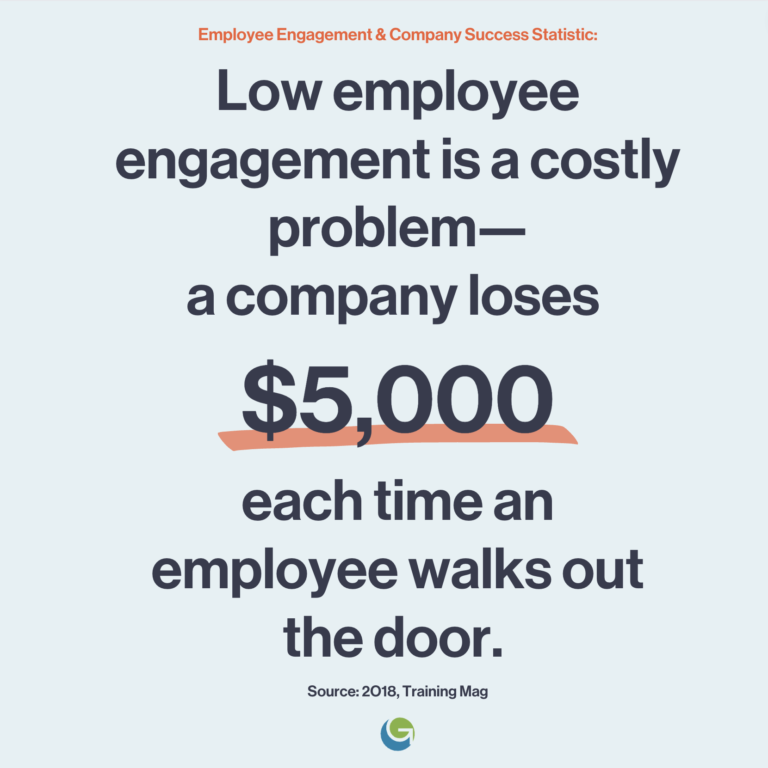
- Low employee engagement costs companies $450-500 billion each year. (2017, The Conference Board Inc.)
- 71% of executives say that employee engagement is critical to their companies’ success. (2015, FastTrack360)
- Highly engaged workplaces see 41% lower absenteeism. (2022, Gallup)
- In healthcare settings, increasing employee engagement decreases the number of patient safety incidents (mortality and falls) by 58%. (2020, Gallup)
- Increasing employee engagement decreases product quality defects by 41%. (2020, Gallup)
- Employees in engaged workplaces become powerful brand ambassadors. (2020, Gallup)

- Globally, 85% of employees are not engaged in the workplace. (2017, Gallup)
- In Western Europe, only 10% of employees are engaged at work. (2017, Gallup)
- In the U.K, the amount of engaged employees is as low as 8%. (2017, Gallup)
- Currently, 36% of U.S. employees are engaged in their work. (2021, Gallup)

- The percentage of actively disengaged employees is up slightly in the U.S., from 14% in 2020 to 15% through June 2021. (2021, Gallup)
- The ratio of engaged to actively disengaged workers in the U.S. is 2.4 to 1, down slightly from 2020 when the ratio was 2.6 to 1. (2021, Gallup)
- 37% of employees consider recognition to be the most important thing a company can do to support them. (O.C. Tanner)
- Only 29% of employees are happy with their career advancement opportunities. (2017, SHRM)
- Up to 87% of millennials consider career development in a job important. (2016, Gallup)
- Employees who do not feel empowered have a 35% chance of staying at the company. (2019, LinkedIn)
- The chances that a new employee will still be at the same company 12 months later is 76%; for two years it’s 59%; and for three years, it’s 48%. (2019, LinkedIn)
- Companies with a highly engaged workforce scored 17% higher on productivity. (2013, Gallup)
- Relationships, honesty, support, and alignment define engaged cultures. (2020, Gallup)
- Engaged employees are 23 times more likely to strongly agree that they would recommend their organization as a great place to work. (2020, Gallup)
- Engaged employees reported that friends and caring colleagues are staples of their organization’s culture. (2020, Gallup)
- Disengaged workers did not report having warm or positive connections with others. (2020, Gallup)
- Engaged workers are far more likely to use words like “open” and “integrity” to describe their culture. Actively disengaged workers mention “gossip” far more frequently. (2020, Gallup)
- “Family,” “teamwork,” and “supportive” are all among the top words of engaged employees in describing close working relationships. (2020, Gallup)
- “Bad” and “poor” describe disengaged workplaces and, quite often, employee outcomes. (2020, Gallup)
- Engaged employees tend to use positive words such as “cooperative,” “collaborative,” and “efficient” when they talk about work. Conversely, the actively disengaged workers describe inefficiency and disjointed work with the terms “lazy,” “slow,” and “disorganized.” (2020, Gallup)
- Only 28% of employees strongly agree they received meaningful feedback in the past week, up from 19% in 2019. (2020, Gallup)
- In 2020, 47% of employees strongly agreed that their organization cares about their overall well-being. (2020, Gallup)

- 26% of U.S. employees work remotely as of 2022. (Zippia, 2022)
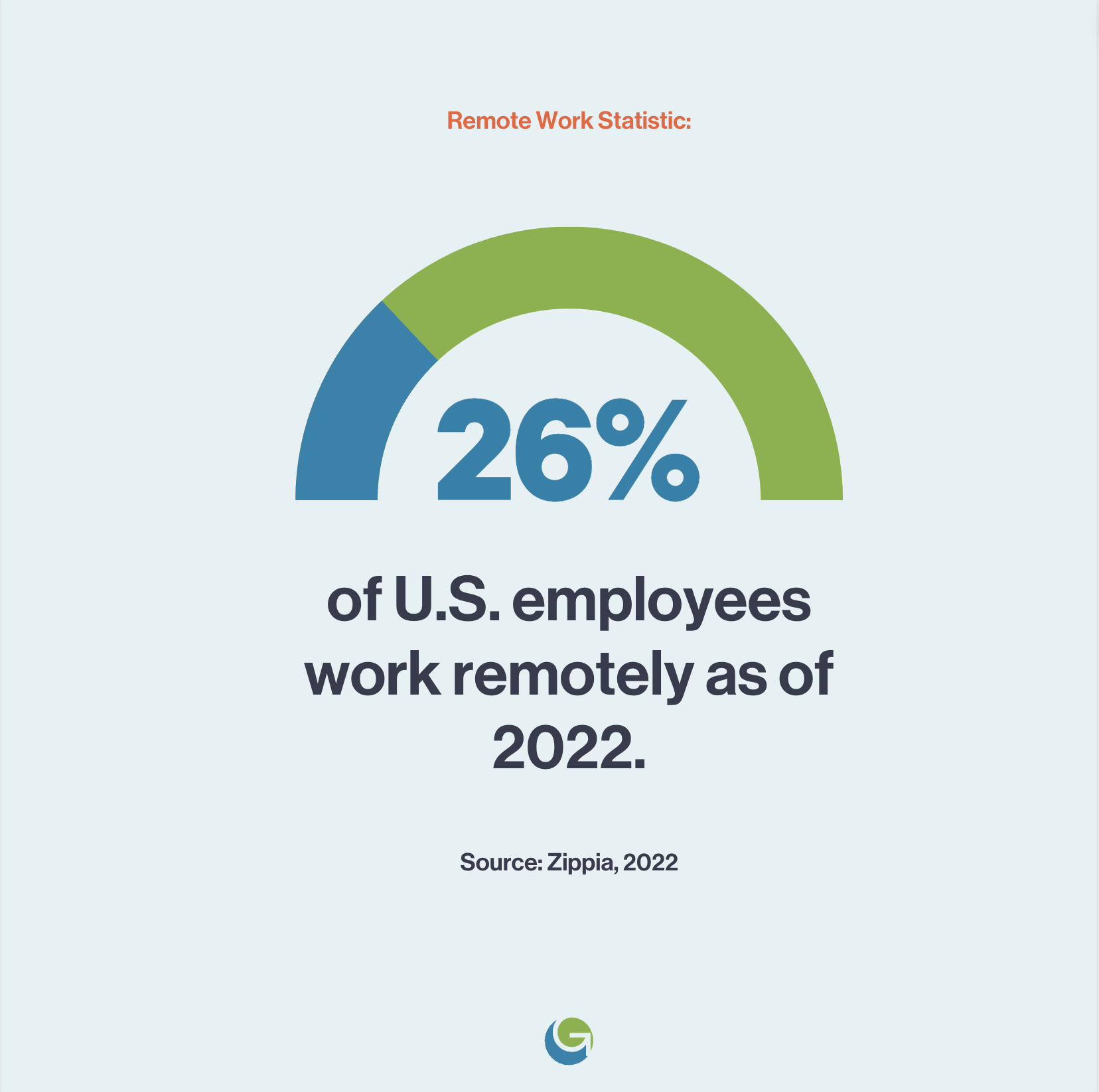
- In 2020, 38% of those who worked from home all or nearly all the time were engaged, compared to 32% of those who worked on-site all or nearly all the time. (2020, Gallup)
- 41% of millennials who work remotely are engaged vs. 30% of on-site workers. (2021, Gallup)
- Remote millennials were more likely than non-remote workers—48% to 39%—to feel well-prepared to do their job. (2021, Gallup)
- 20% of remote employees say they lack a sense of belonging and sometimes feel lonely. (2018, Forbes)
- 38% of remote employees feel exhausted after daily virtual meetings. (2020, Forbes)
- In 2020, 29% of people who fully worked from home reported burnout very often or always. (2020, Gallup)
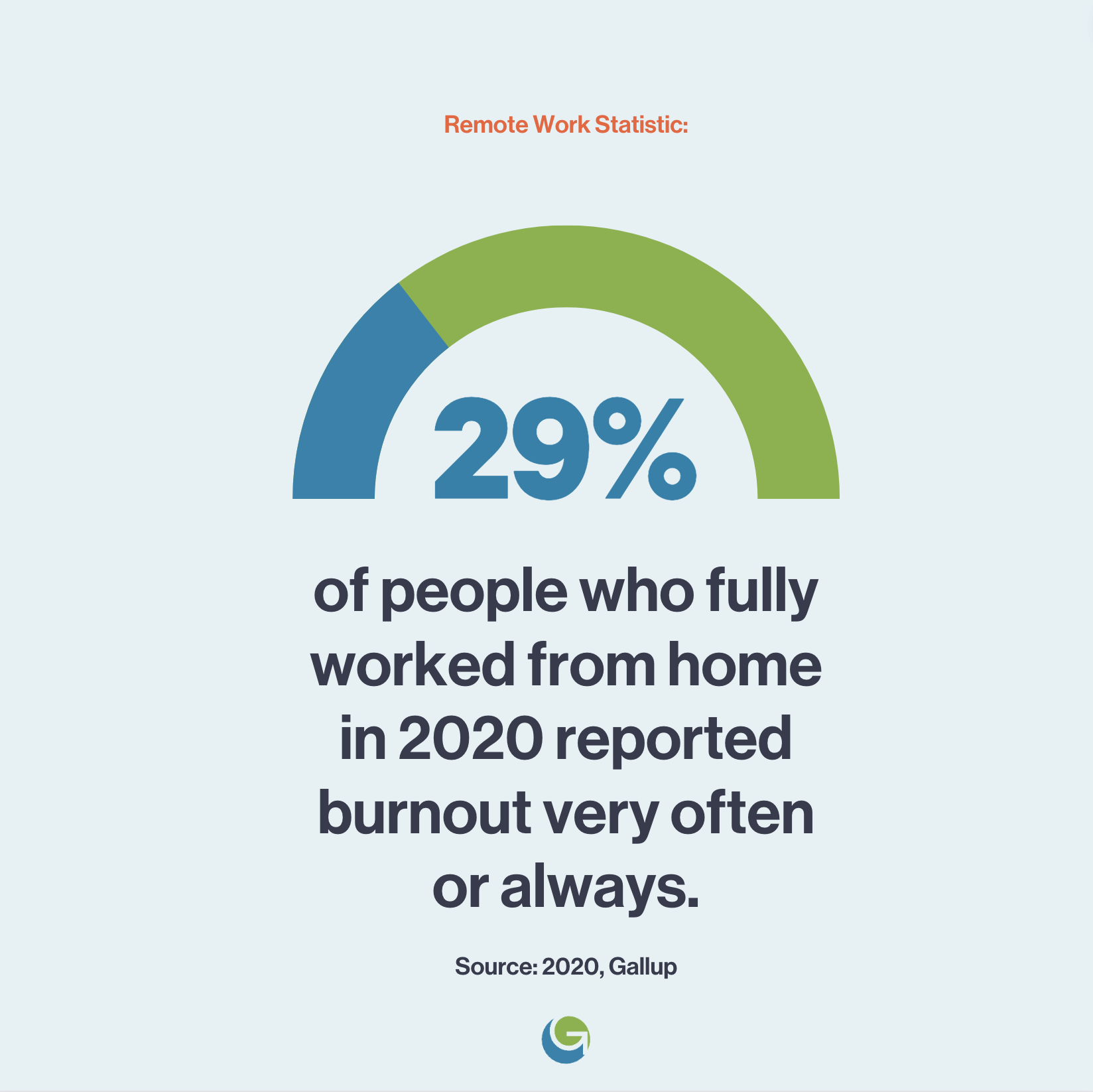
- Engaged employees who are struggling or suffering in their overall lives have a 61% higher rate of burnout. (2020, Gallup)
- After a rollercoaster year in 2020, U.S. employee engagement increased to 39% in January 2021, up from 36% in late 2020. (2021, Gallup)
- The percentage of workers who are “actively disengaged” increased slightly from 2019 to 2020, from 13% to 14%. (2020, Gallup)

- According to research of more than 600 U.S. businesses with 50-500 employees, 63.3% of companies say retaining employees is actually harder than hiring them. (2020, Zenefits)
- 73% of employees are considering leaving their jobs. (2021, Business Insider)
- 89% of employers think employees leave because of money, when only 12% actually do. (2020, O.C. Tanner)
- Half of employees would sacrifice their salary, as much as 29% of it, to work a job they enjoy. (2019, HR Dive)
- 59% of employees say if they were given a new opportunity they would take it. (2020, O.C. Tanner)
- 29% of employees said they regularly search for jobs even when employed. (2019, CareerBuilder)
- Top reasons workers left a job were not feeling valued, not being paid enough, and inadequate opportunities for advancement. (2019, Reflektive)
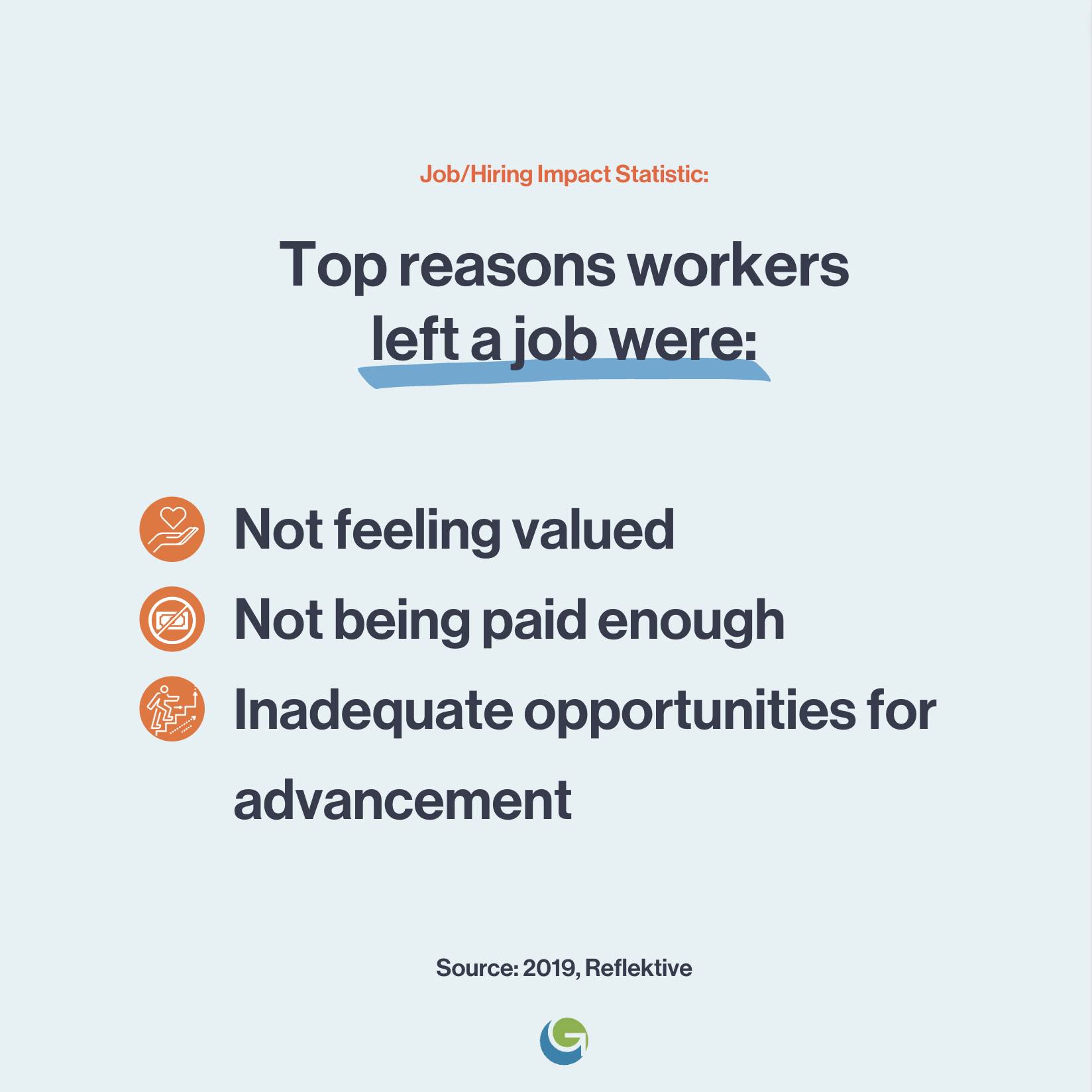
- 85% of professionals would consider leaving their company over an unfair performance review. (2019, Reflektive)
- 1 in 3 professionals cite boredom as their main reason to leave their jobs. (2018, Korn Ferry.)
- 58% of workers said money is the main driver in choosing their work, followed by benefits and vacation packages. (2019, Reflektive)
- About 50% of female workers and 35% of male workers said not earning enough money is the top reason they’re unhappy with their employers. (2019, Ceridian)
- 25% of employees reported leaving a previous job because they felt underpaid. (2019, Hibob)
- 81% of job seekers cited dissatisfaction with the work environment as the major reason they started to look elsewhere for work. (2019, Addison Group)
- 48% of workers left their job because it wasn’t what they thought it would be. (2019, ThriveMap)
- 38% of younger employees ages 18-25 and 34% of employees ages 51-55 were most likely to quit their job because of a coworker. (2019, HR Dive)
- Women were 11% more likely than men to say flexible work options drove them to a new job. (2019, PayScale)
- 68% of employees would consider leaving their job if they didn’t feel supported by more senior employees. (2019, Staples)
- 67% of workers would consider leaving their job if work arrangements became more rigid. (2019, Staples)
- 73% of Gen Z workers left a job because it didn’t meet their expectations. (2019, ThriveMap)

- 79% of employees would not accept a job with a higher salary from a company that failed to act in response to a report of sexual harassment. (2019, The Manifest)
- 76% of employees wouldn’t join a company offering a higher salary that sells users’ data without users’ knowledge. (2019, The Manifest)
- 72% of employees wouldn’t accept an employer that endangers the environment. (2019, The Manifest)
- By increasing employee engagement, turnover decreased 18% in high-turnover organizations, and 43% in low-turnover organizations. (2020, Gallup)
- Among actively disengaged workers in 2021, 74% were either actively looking for new employment or watching for openings. (2021, Gallup)
- 27% of employees said the opportunity to do more meaningful work is why they accepted a new position. (2019, PayScale)
- 61% of U.S. adults look for career development opportunities when considering employment opportunities. (2019, Jobvite)
- 79% of organizations have lost out on at least one job candidate due to the lack of flexibility in work hours. (2022, Capterra)
- 69% of employees will reject a job offer if they find out that a company’s workers are generally unhappy. (2019, Hibob)

- 91% of the surveyed employees think that their leaders lack communication skills. (2017, Inc.)
- 85% of employees say they’re most motivated when management offers regular updates on company news. (2018, Trade Press Services)
- Employees who say their manager is not good at communicating are 23% more likely to experience mental health declines. (2020, Harvard Business Review)
- Almost 1 in 3 employees don’t trust their employers. (2016, Edelman)

- 84% of highly engaged employees were recognized the last time they went above and beyond at work compared to only 25% of actively disengaged employees. (2019, Bonusly)
- 79% of Gen Z and millennial employees said an increase in recognition rewards would make them more loyal to their employers. (2019, daVinci Payments)
- Just 31% of employers conduct employee surveys and 13% conduct focus groups. (2020, Willis Towers Watson)
- 29% of full-time workers who changed jobs in the past two years said a bad boss could drive them out. (2019, Ajilon)
- Companies with highly rated management teams have greater retention rates. (2019, LinkedIn)
- Employees said managerial support was the most important aspect of company culture. (2019, Cision US Inc)
- 70% of the variance in team engagement is determined solely by the manager. (2020, Gallup)
- Employees who receive daily feedback from their manager are 3x more likely to be engaged than those who receive feedback once a year or less. (2020, Gallup)
- Most managers don’t know how to make frequent conversations meaningful, so their actions are more likely to be interpreted as micromanaging. (2020, Gallup)
- The new workforce, especially younger employees, demands managers who develop employees, communicate frequently with them, and care about their overall well-being. (2021, Gallup)
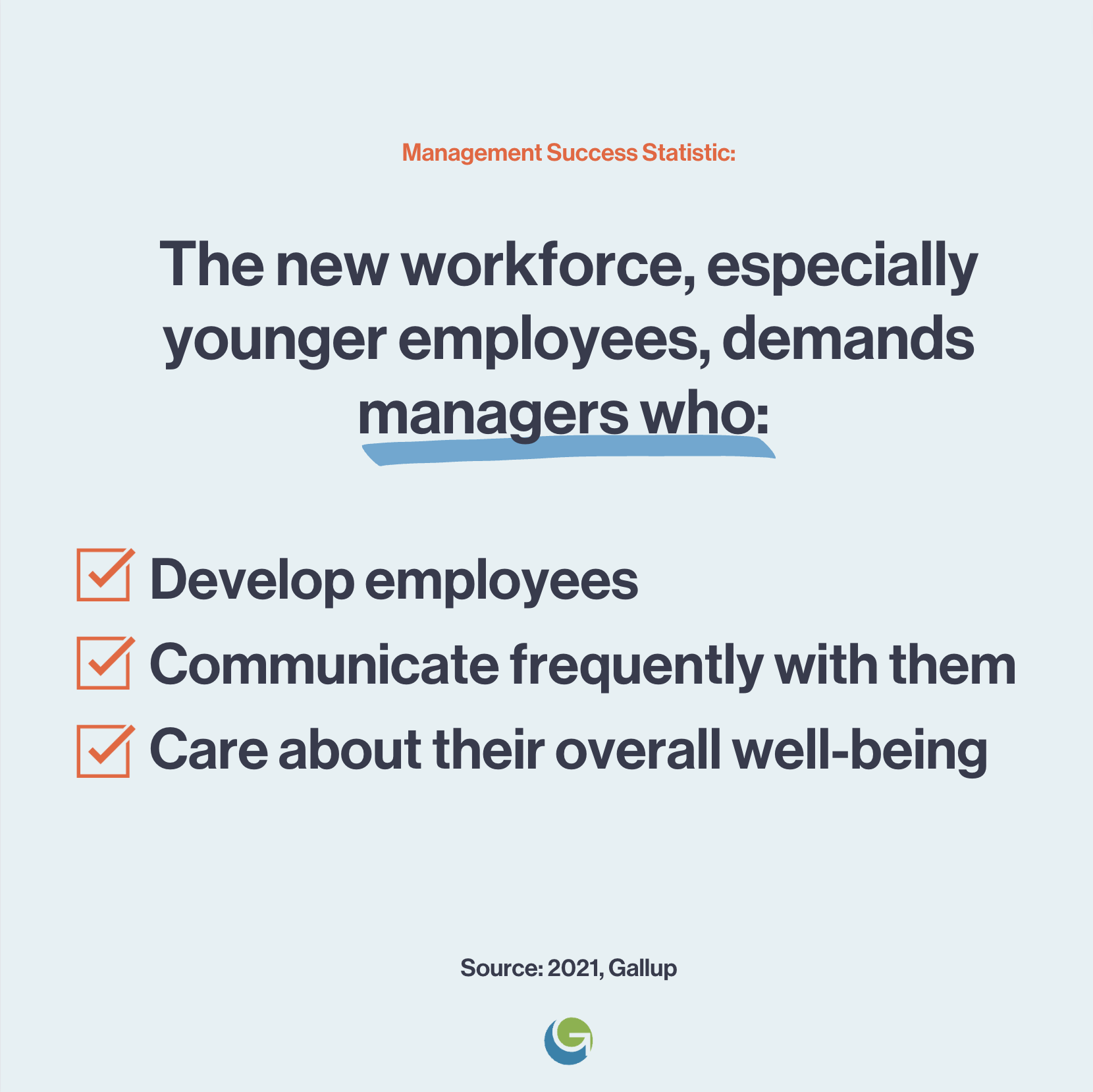
- In 2020, manager engagement, already low, declined from 34% to 33% in the first to second half of the year. (2020, Gallup)
Increase your employees’ engagement by partnering with GenesisHR.
Since 1991, GenesisHR has been helping business owners become better employers. In that time, our PEO has helped clients weather recessions, pandemics, and more. We understand businesses, and we understand employees; we also work hard to stay on top of changing trends so you can be proactive in keeping your high-achieving employees happy, motivated, and engaged.
If you’re curious about what you can do to bolster employee engagement as part of a holistic plan to grow your company, we’d love to talk—get in touch here.
Sources (In Alphabetical Order)
Bonusly. “The 2019 Employee Engagement and Modern Workplace Report” Go.Bonus.ly.
Business Insider. “Nearly three-quarters of workers are actively thinking about quitting their job, according to a recent survey” Businessinsider.com. Oct 7, 2021.
Capterra. “The “Where” of Work Has Been Upended—Next Is the “When”” Capterra.com. May 25, 2022.
Career Builder. “Survey from CareerBuilder Reveals Half of Employees Feel They Have “Just a Job” Amid Heightened Career Expectations” Careerbuilder.com. July 23, 2019.
Ceridian. “Eighty percent of employees are stressed about money: Ceridian’s Pay Experience Report” Ceridian.com. June 10, 2019.
Cision, PR Newswire. “The Employee Experience will be Critical to Business Success in 2019, According to New Hiring Outlook Report by The Execu|Search Group” Prnewswire.com. Jan 7, 2019.
DaVinci Payments. “Survey: Small acts of recognition help younger workers feel fulfilled at work” Hrdive.com. Sept 9, 2019.
Edelman. “2016 Edelman Trust Barometer.” Edelman.com. Jan 16, 2016.
FastTrack360. “Employee engagement leads to greater productivity” Fasttrack.com.au. Feb 18, 2015.
Forbes. “Is Working Remote A Blessing Or Burden? Weighing The Pros And Cons” forbes.com. June 19, 2020.
Gallup. “How Employee Engagement Drives Growth” Gallup.com. June 20, 2013.
Gallup. “Employee Engagement vs. Employee Satisfaction and Organizational Culture” Gallup.com. August 13, 2022.
Gallup. “U.S. Employee Engagement Rises Following Wild 2020” Gallup.com. Feb 26, 2021.
Gallup. “What Disruption Reveals About Engaging Millennial Employees” Gallup.com. Jan 6, 2021.
Haiilo. “8 Employee Engagement Statistics You Need to Know in 2022 [INFOGRAPHIC]” Haiilo.com.
Harvard Business Review. “How CEOs Can Support Employee Mental Health in a Crisis” hbr.com. May 1, 2020.
Ajilon. “Pay a top consideration for many recent job hoppers” Hrdive.com. Sept 9, 2019.
Hibob. “Most job seekers will reject offers after learning current workers are unhappy” HRdive.com. Aug 20, 2019.
Inc. “Survey: 91 Percent of 1,000 Employees Say Their Bosses Lack This 1 Critical Skill.” Inc.com. Aug 10, 2017.
Korn Ferry. “Breaking Boredom: Job Seekers Jumping Ship for New Challenges in 2018, According to Korn Ferry Survey” Korn-ferry.com. Jan. 4, 2018.
LinkedIn. “3 Factors Strongly Linked to Better Employee Retention, According to 32 Million LinkedIn Profiles” linkedin.com. Nov 20, 2019.
O.C. Tanner. “2020 Global Culture Report O.C. Tanner Institute” Octanner.com.
PayScale. “PayScale Research Shows the #1 Reason Employees Quit is Pursuit of Higher Pay, but Money Alone May Not be Enough to Attract Talent” Globenewswire.com. May 14, 2019.
Reflektive. “New Reflektive Research Indicates Unfair Performance Reviews Prompt Most Employees to Consider Quitting” Businesswire.com. July 22, 2019.
Staples. “Survey: Flexibility, wellness key to employee retention” Benefitspro.com. Feb 14, 2019.
The Conference Board. “DNA Of Engagement.” Conference-board.org.
The Manifest. “How Do Employees Act When Faced With Unethical Company Behavior?” themanifest.com. Feb 20, 2019.
ThriveMap. “Study: 48% of workers have left a job because it didn’t meet expectations” Hrdive.com. March 27, 2019.
Trade Press Services. “Using Internal Communications to Enhance Business Growth.” Tradepressservices.com. June 12, 2018.
Training Magazine. “2O18 Training Industry Report” Trainingmag.com. November/December 2018.
WTW. “Infographic: Enhance the employee experience amid COVID-19.” WTWCO.com. June 25, 2020.
Zenefits. “Research: Employee Retention a Bigger Problem Than Hiring for Small Business” Zenefits.com. Jul 08, 2020.
Zippia. “25 Trending Remote Work Statistics [2022]: Facts, Trends, And Projections” Zippia.com. Oct 16, 2022.





